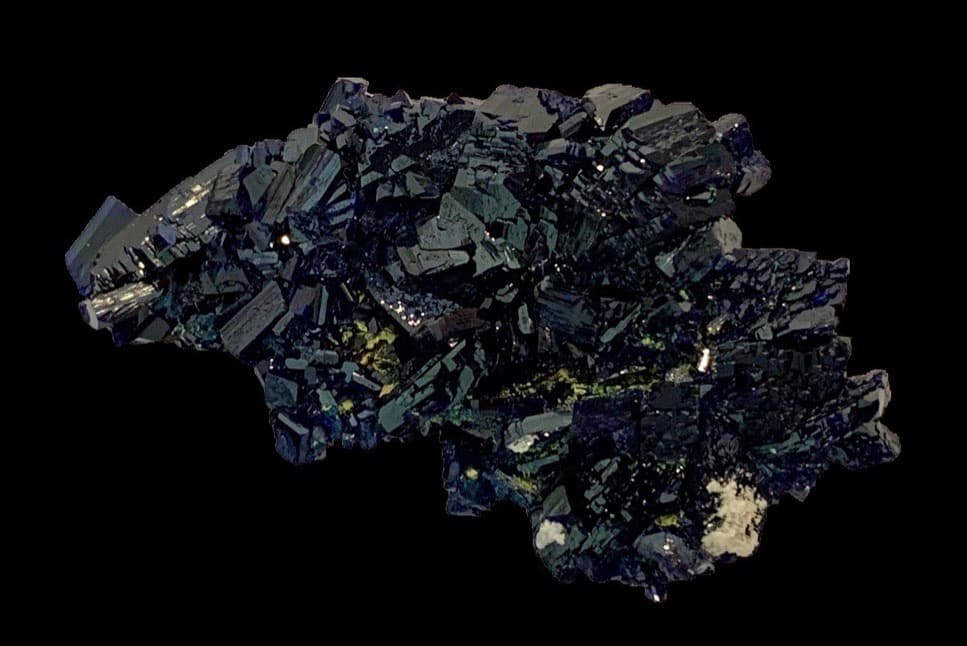The mineral azurite, derived from the root "Azure", meaning blue, has been prized for its vibrant hues since ancient times. Azurite is one of the two basic copper carbonates; the other one is malachite.
As a copper carbonate, the mineral azurite is comprised of one copper cation linked to two different anions: the carbonate anion which is composed of carbon, hydrogen, and oxygen, and the hydroxide anion comprised of oxygen and hydrogen. This structure makes Azurite a relatively soft mineral with a high specific gravity.
 Azurite (blue) associated with Malachite (green)
Azurite (blue) associated with Malachite (green)
The chemical composition of azurite also accounts for the mineral's formation in weathered copper ore deposits. As the weathering process of copper deposits requires relatively dry conditions to prevail, many Azurite localities are situated in xeric areas. Notable deposits of Azurite are found in Arizona, Morocco, Mexico, and several areas in China and Central Africa.
Azurite occurs in varying forms, such as monoclinic crystals, massive forms, and botryoidal masses.
Azurite has been prized since ancient times as a valuable stone for ornaments and pigments. Many famous paintings have used azurite as a pigment. Today, Azurite is primarily used for decorative items and jewelry.
Properties
Mineral Class: Carbonates
Chemical Formula: Cu3(CO3)2(OH)2
Crystal System: Monoclinic
Hardness: 3.5 to 4
Specific Gravity: 3.78
References
"Azurite", Encyclopedia Brittanica, 31 January 2019 https://www.britannica.com/science/azurite ↗
"Azurite", Mindat, Mindat.org ↗, 22 November 2019
